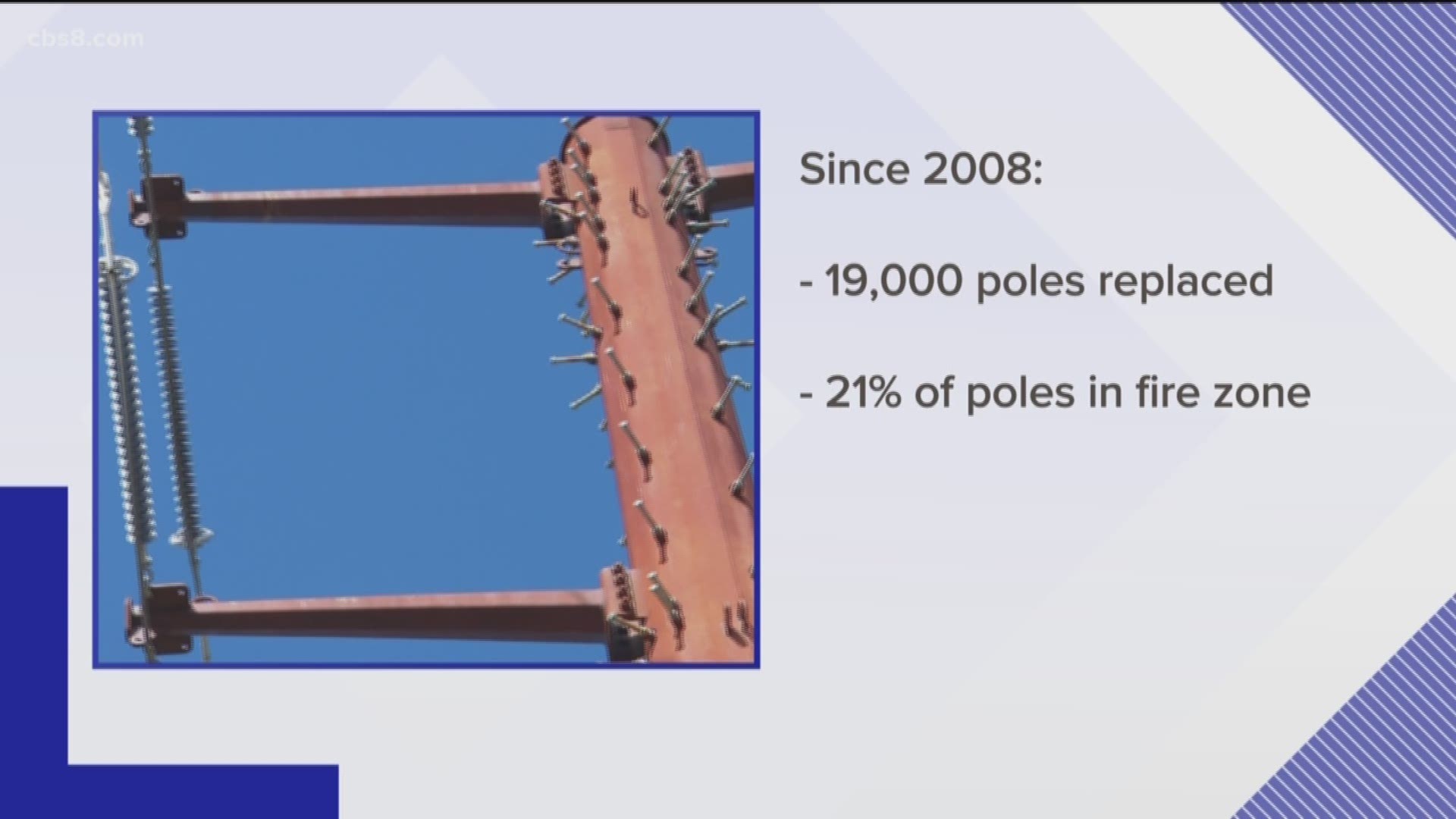SAN DIEGO — For the past 10 years, SDG&E has been upgrading its electrical system in the backcountry; replacing poles and undergrounding lines in the hope of reducing wildfires.
It's a slow process and customers are paying for it.
The effort began after the 2007 wildfires when SDG&E power lines started three massive fires in the East County. Two people were killed and more than 1,300 homes destroyed.
Power lines on a ranch near Santa Ysabel started the Witch Fire when high winds cause the lines to arc.
Today, the wooden poles that supported those lines have been replaced with stronger, steel poles. The work is part of a massive effort by SDG&E to upgrade its system, paid for by San Diego customers.
“We really put steel poles in, the main reason is, so they can withstand high wind speeds, so they don't fall over during high wind events, “ said Jonathan Woldemariam, SDG&E’s director of wildfire mitigation.
Since 2008, Woldemariam said 19,000 wooden poles have been replaced with steel, that’s about 21% of all the poles in the backcountry wildfire zone. The project should be completed by 2027.
“It's not just about changing from wood to steel. But also the equipment that goes with that; the wires and transformers and fuses that are associated with the electric infrastructure is what we're changing out,” said Woldemariam.
The replacement project requires thousands of helicopter runs to drop the steel poles into place in remote areas taken over by construction crews and storage yards throughout the East County.
Homeowner Deborah Blake says she's happy to work with SDG&E to get the project finished as long as the steel poles actually make her community safer and result in fewer power shutoffs by SDG&E.
“I mean we're getting taxed for it. So, we'd like it completed,” Blake said during an interview in the driveway of her Descanso home.
“The theory is that the lines will be safer and they'll be less need to shut it off with as much frequency. Whether that proves to be true remains to be seen,” she said.
SDG&E is spending more than a billion dollars to install the metal poles. The company also has undergrounded some lines.
While undergrounding does make power lines safer, the process is expensive and usually can only be done along existing roadways. Digging trenches through remote, wilderness areas presents obstacles.
“It isn't just that the construction is difficult, but it’s also the environmental constraints and impacts to the environment that we consider,” said Woldemariam.
SDG&E has about 3,500 miles of power lines in the high-risk fire zone. Only about 15 miles have been undergrounded for fire safety reasons. Twenty additional miles will be undergrounded in the future.
That's not enough, according to San Diego County Supervisor Dianne Jacob, who would like to see SDG&E spend more money on upgrading its system, and less money on fighting legal battles over who pays the bill for the 2007 wildfires.
“They say that they're making great progress and we've got until 2027 until they finish the job? The fire was 2007. They knew they started those three fires. They're responsible. Pay the bill. But no, they've been fighting against paying the bill,” said Jacob.
SDG&E said when the upgrades are done the system will be safer and there will be fewer power shutoffs in the backcountry. As the electrical system gets upgraded, SDG&E said it will be able to pinpoint power shutoffs to a smaller number of customers, as well as limit the shutoffs to the most extreme red flag events.

